People who love gardening know that winter and early spring can drag on and on. So it’s good to have a project in your back pocket to get outside and improve the garden during the off-season. I’ll share our experience and give a few tips on creating or replacing your own garden path.
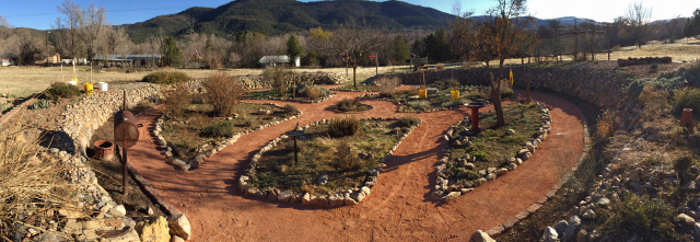
Panoramic view of the completed path in March. Now, to just get rid of the protective buckets and watch the flowers grow!
The weedy gravel walkways in our rock garden needed help. We replaced the old with new landscape fabric and crusher fine, also called decomposed granite. There were several reasons for the project, mostly the weeds I mentioned.
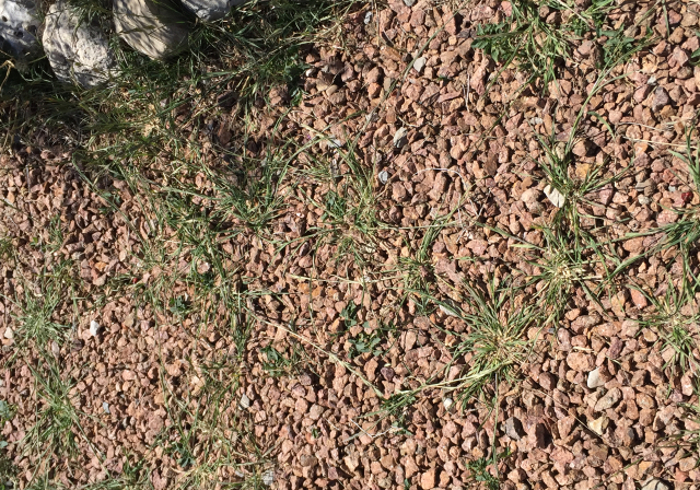
We estimate that the original paths, installed by the previous owners of our property, were about 10 years old. The weeds and grasses began to poke through the thin landscape fabric and I spent nearly all of my free time bent over pulling weeds out of rocks.
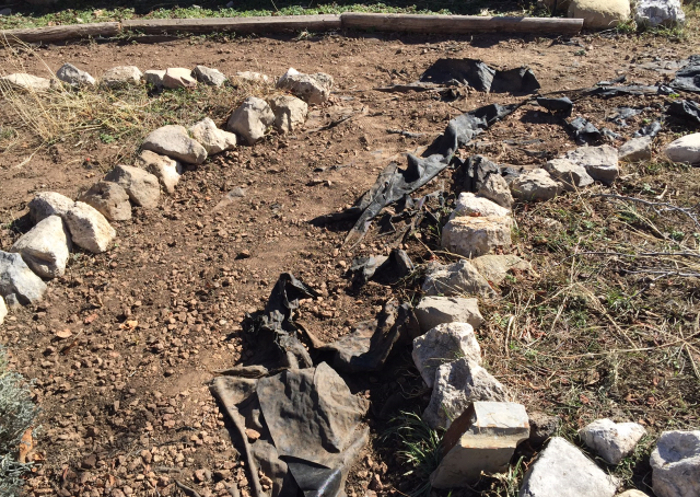
A look at what was left of the old landscape fabric after scraping and hauling off most of the old gravel.
We needed to get the new path in before spring planting. And we were done ahead of schedule after:
- Spending 2 to 3 months cleaning out old rock and installing new crusher fine.
- Moving and replacing more than 500 border rocks.
- Laying about 10.5 rolls of 50-foot landscape fabric.
- Adding nearly 200 new pavers.
- Hauling and shoveling more wheelbarrow loads of old gravel and new crusher fine than we could count.
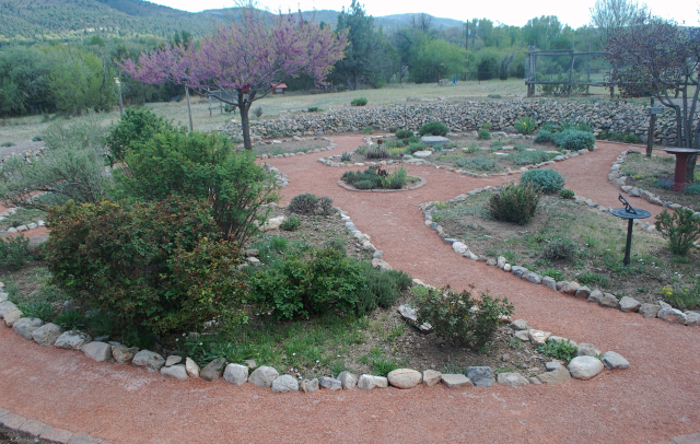
Moving and resetting all of the rocks bordering the path was tedious, but necessary. And we are never short on rocks around here.
Reasons To Use Crusher Rine For Garden Paths
Crusher fines are just that – small particles of crushed rock. So although it might seem crazy to replace rock with rock, hear me out. The landscape gravel was made up of rocks about three-fourths inch in diameter. These let sun, air, water, and especially weed seeds filter down through the layers and held just enough blowing dirt in to feed the seeds. A thin fabric can only do so much to stop weeds from taking root, especially once any tear in the fabric occurs.
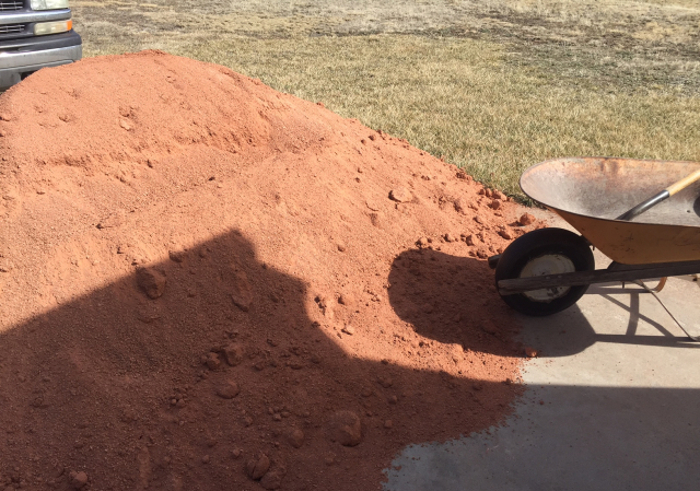
Crusher fines are made of tinier particles and dust, so after you level and tamp them down, the surface evens out and compacts, forming a hard layer that feels more like concrete than rock, but maintaining a rocky, natural appearance. To help prevent weeds, the layer has to be thick – we tried to keep it at two to three inches all the way around. Crusher fine also comes in landscape colors, although we had to pay plenty to have ours trucked in from 45 miles away
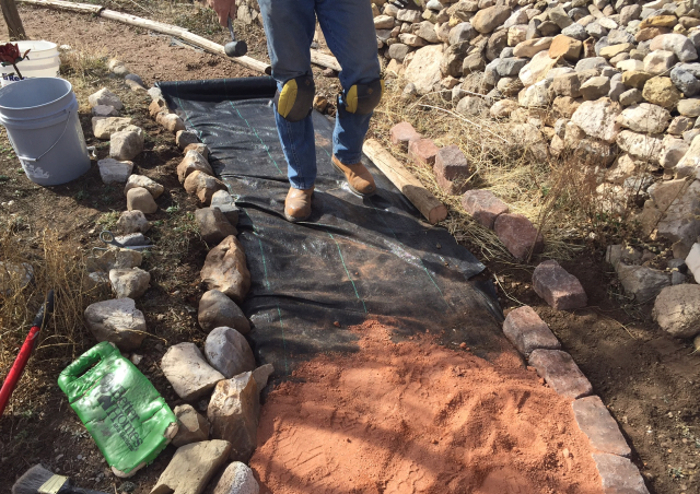
First section, before leveling and tamping. The rotted wooden borders are toward the back. Tim replaced them with pavers. Note the required knee pads!
Using Landscape Fabric Underneath Crusher Fines Path
The thin landscape fabrics available in big-box stores don’t cut it in most situations for weed control. We ordered ours online from Greenhouse Megastore. It’s Weed Barrier brand with a 20-year warranty.
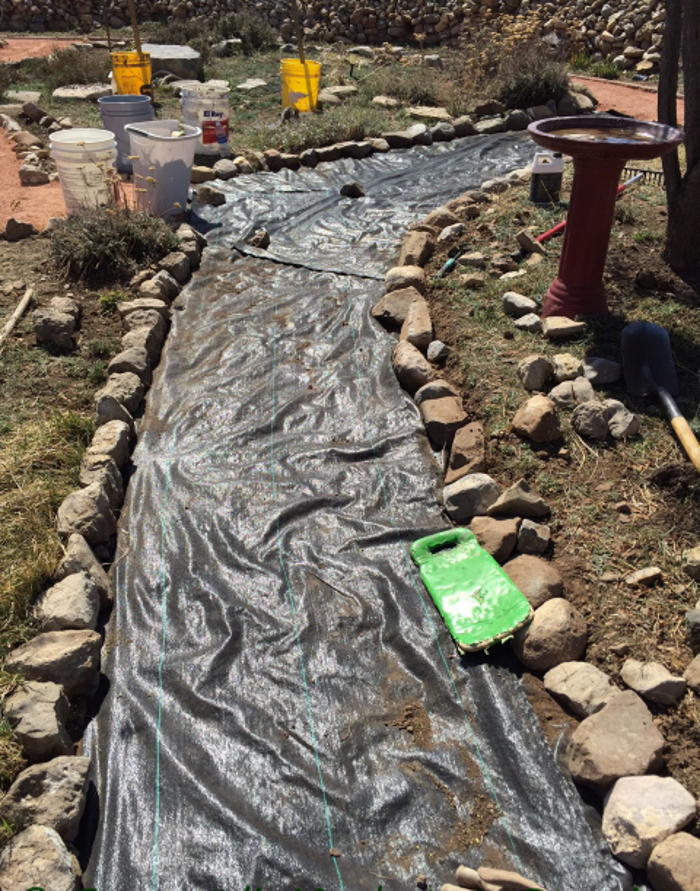
Heavy-duty landscape fabric in the last section. By now, we were a little sloppy with folds, but we got it under all of those rocks, and the folds were minor. The rocks in the upper center are holding down fabric temporarily before dumping the crusher fine on top.
The fabric is touted as great for xeriscaping and allows air, water, and nutrients through, but blocks light. Since we used it in a path, we didn’t care about light (and less is best for weed seeds) but we didn’t want standing water. Both the fabric and crusher fine are water permeable, so the water seeps down, eventually back into the ground.
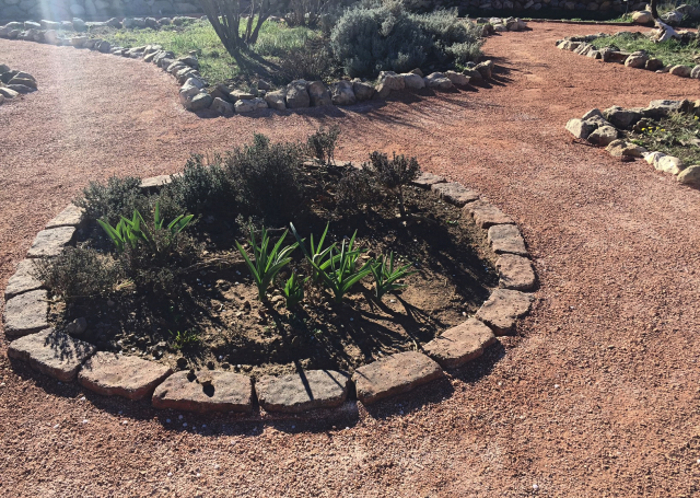
The fabric was heavy duty but easy to work with for the most part. Our garden is a circle, with smaller circles and curves throughout. My theory is that any crack/slit/opening in the fabric is an invitation to a hardy weed like field bindweed. But to make curves, you have to carefully slit and overlap the fabric. The fewer cuts the better.
Repurposing Old Gravel From the Garden Path
So, out with the old and in with the new. The worst part of the project was scraping, shoveling and hauling off the old gravel. And what do you do with several tons of rocks?
Our first step was to repurpose the old gravel in a few beds (over landscape fabric and with cuts for plants) and to add depth to another path in the front yard that has the same gravel. No way we could tackle it too, and I hope that by adding to the depth, we made it a little more difficult for weeds to root. Someday, we’ll have to move that gravel again and replace it with crusher fine. But not today. Or this month or this year…
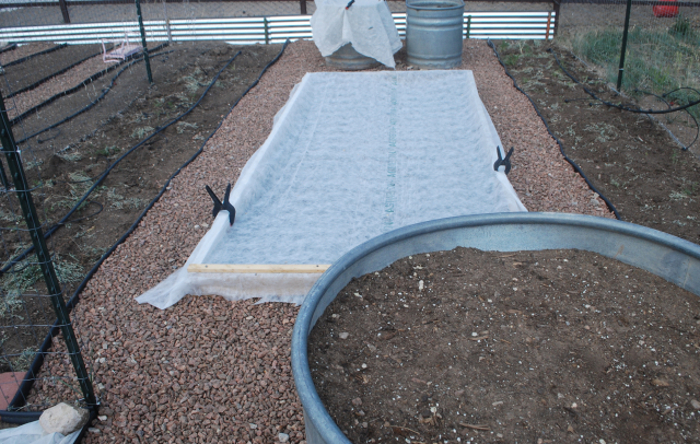
Repurposed garden path gravel. Less mud now in our vegetable/microfarm area with inexpensive plastic border.
We also hauled loads of the old gravel to our vegetable garden and dumped it on strips of fabric left over to cut down on mud and weeds in the walkways. As for the rest, it’s in a pile, waiting for friends to claim it or for Craig’s List.
Tips on Creating a Garden Path With Crusher Fines
- If you can design your own path, consider gentle curves when possible. Circles are tough. Mention this to a landscape architect if you have one, so you can be ready to replace the path when the time comes or get an estimate of the cost for a landscape company to do so.
- Invest in professional quality landscape fabric.
- Work in sections, leaving fabric in the longest continual length possible, which might mean leaving the roll at the end of a section. (We just turned the wheelbarrow upside down over the roll to protect it from deer damage.)
- Overlap the fabric by several inches at cuts and intersections, and try to avoid large folds.
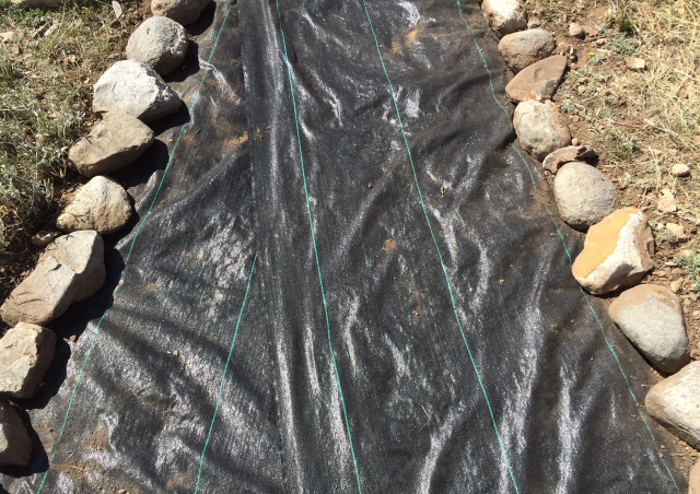
In straight areas, the roll fit fine with no piecing. But at curves and intersections, we had to overlap, like in this path.
- Get some fabric under borders such as pavers, even if it means lifting and replacing the hardscape.
- Place border rocks or pavers on fabric before adding crusher fine.
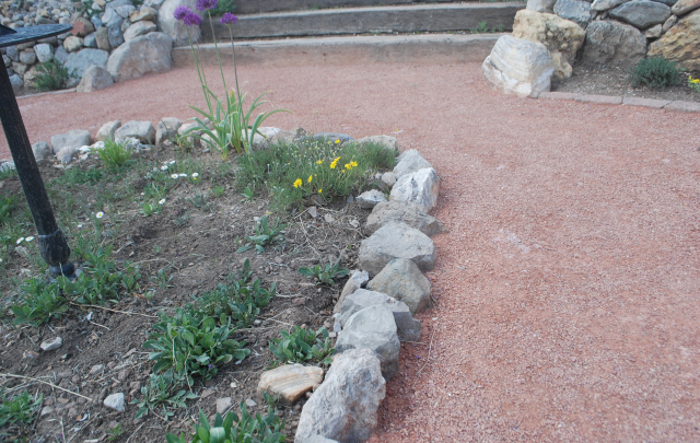
After several weeks, tamping and a rain, the crusher fine hardens ad creates a level walking surface. By pushing some against rocks and gaps between them, the crusher fine seeps just under the rocks, almost acting like mortar to secure them.
- Work in sections to spread crusher fine in a thick, even layer. We used the back (straight edge) of a bow rake.
- Invest in a tamper (ours was about $40).
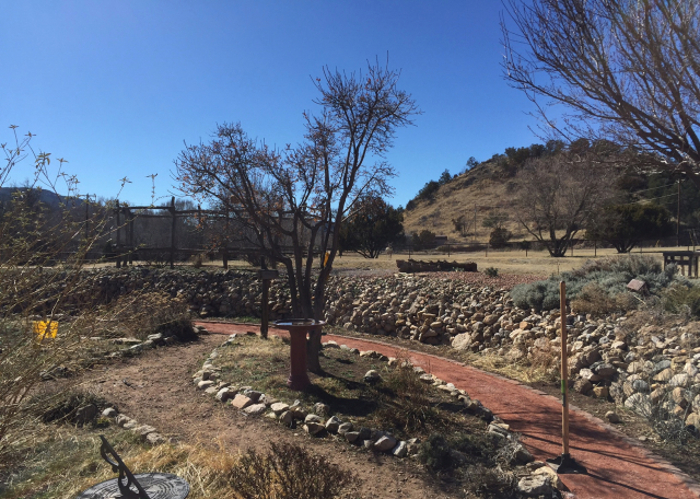
First and last sections completed. Our simple tamper (right) required some muscle, but did the job.
- Spray the crusher fine with water before your last tamp. It helps bind the crusher fine mix. (And the color of the path really comes out after rain.)
- Keep a small pile of crusher fine handy for a few weeks, or at least after a few rains. You might find low spots or phantom folds poking through. Just add a few shovels to the spot and level it with the existing crusher fine.
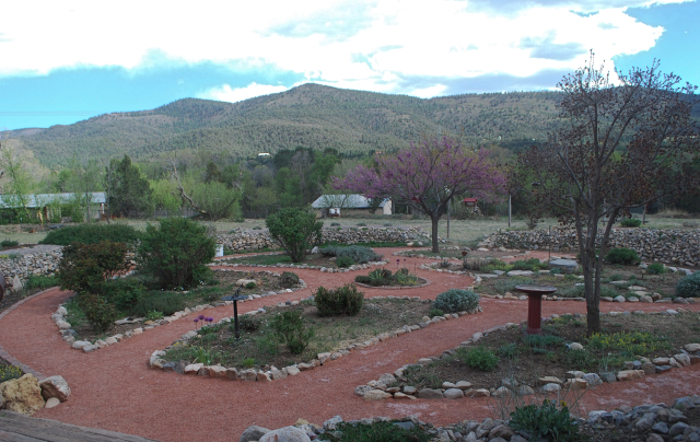
And then enjoy! It’s like a dream to walk on and has a really neat appearance.
 |
Author Teresa Odle - Published 12-10-2020 |
